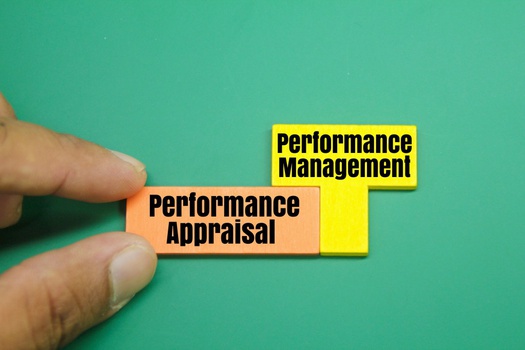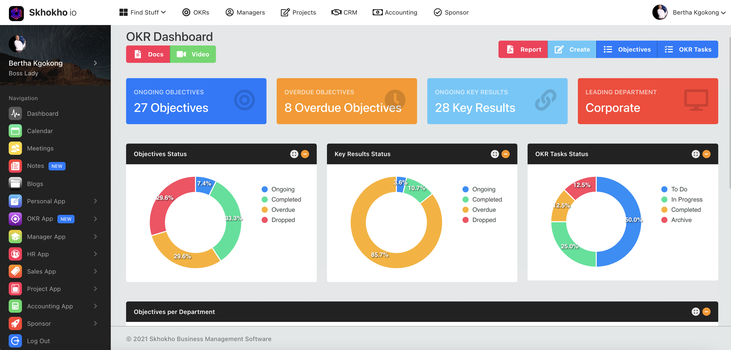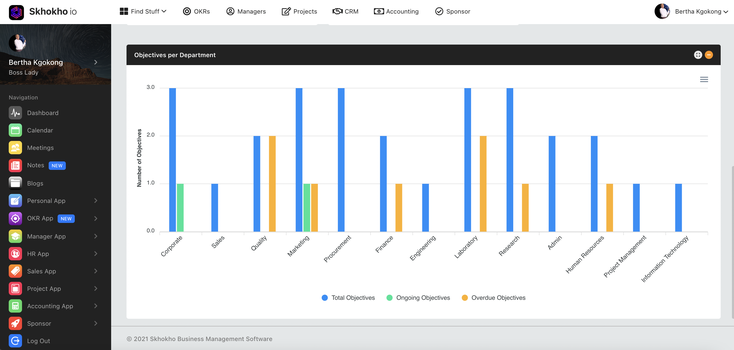The Best Performance Management Templates and Tools to Help You Manage Your Team More Effectively
In this article we will be discussing the best performance management templates and tools to help you manage your team more effectively and get the best out of your people. Performance management is a two way process, and we will arm you with the tools and templates you need to get started like a pro.
What is Performance Management?
Performance management is the process of setting goals and objectives for team members, assessing their progress, and providing feedback and support to help them improve their performance.

The origins of performance management date back to the early 20th century, when scientific management theorists began to advocate for the use of data and performance metrics to improve efficiency in industrial workplaces.
In the decades that followed, companies increasingly adopted performance management systems, though there was no one-size-fits-all approach.
Over the years, performance management has evolved as companies have experimented with different approaches. Some companies have placed emphasis on individual performance, while others have taken a more team-based approach. Some have used performance management as a tool for employee development, while others have used it primarily for assessment and feedback.
No matter what approach a company takes, the goal of performance management is to improve the performance of individuals and teams. By setting clear goals, providing regular feedback, and offering support, performance management can help employees and teams reach their full potential.
The Benefits of Performance Management
Organisations worldwide are realising the importance of performance management. By tracking and measuring employee performance, organisations can identify areas where employees need improvement and provide targeted training and development programmes.
Additionally, performance management can help to identify high-performing employees who can be promoted or given additional responsibilities.

There are numerous benefits of performance management, both for employees and for organisations as a whole. Let’s take a look at some of the key benefits of performance management:
1. Improved employee performance
One of the main benefits of performance management is that it can lead to improved employee performance. By setting clear goals and objectives, and providing feedback on a regular basis, employees will have a better understanding of what is expected of them and how they can improve. Additionally, performance management can help to identify areas where employees need additional training and development.
2. Increased employee engagement
Another benefit of performance management is that it can help to increase employee engagement. When employees feel that their performance is being managed effectively and that their development is being supported, they are more likely to be engaged with their work. This, in turn, can lead to improved performance and higher levels of productivity.
3. Enhanced team productivity
In addition to improved individual performance, effective performance management can also lead to enhanced team productivity. When team members are aware of each other’s goals and objectives, they can work together more effectively to achieve common goals. Additionally, regular team performance reviews can help to identify areas where the team as a whole can improve.

4. Greater organisational success
Ultimately, all of the above benefits can lead to greater organisational success. When employees are performing at their best and are engaged with their work, organisations are more likely to achieve their goals and objectives. Additionally, effective performance management can help organisations to attract and retain top talent.
However, performance management can also lead to negative consequences such as decreased motivation, increased stress, and decreased job satisfaction.
When deciding whether or not to implement performance management in their organisation, employers and managers should weigh the pros and cons carefully. They should also consider the specific needs of their organisation and employees, and whether performance management is likely to help or hinder employees in achieving their goals.
The Five Key Components of Performance Management
1. Goal Setting
Setting goals is the first and most important step in the performance management process. By identifying specific goals and objectives, managers can help employees focus their efforts and better understand what is expected of them. Additionally, goals should be achievable, measurable, and aligned with the company’s overall strategy.

Goal Setting Example
In order to demonstrate this key component, imagine an employee who is working in the product development department. As their manager, you can set objectives for them to achieve such as:
- Reduce product cost by 10%
- Develop 3 new products within the next 6 months
- Increase customer satisfaction ratings by 2%
2. Performance Feedback
Performance feedback is a critical part of the performance management process. It provides employees with an opportunity to receive constructive feedback on their performance and gives managers the chance to identify areas of improvement. Feedback should be given on a regular basis, and it should be specific, objective, and actionable.
Performance Feedback Example
If an employee is not meeting the objectives you set for them, you can provide feedback such as:
- “I noticed that you haven’t been able to meet your deadline for the past few weeks. What can we do to help you be more successful?”
- “Your customer satisfaction ratings have been slipping. Let’s brainstorm some ways to turn that around.”
3. Development Planning
Development planning is another important component of performance management. It helps employees identify their development needs and creates a plan for addressing those needs. Additionally, development planning can help employees feel more engaged and motivated in their work.

Development Planning Example
If an employee is struggling to meet their objectives, you can work with them to develop a plan that includes:
- Specific goals and action items
- A timeline for completion
- Resources and support needed
4. Coaching and Mentoring
Coaching and mentoring are important tools for supporting employee development. By providing employees with guidance and support, managers can help them improve their performance and reach their potential. Additionally, coaching and mentoring can build trust and improve communication between employees and managers.
Coaching and Mentoring Example
If an employee is having difficulty meeting their goals, you can provide coaching and mentorship by:
- Meeting with them regularly to discuss progress and challenges
- Offering advice and guidance
- Connecting them with resources and support
5. Recognition and Reward
Recognition and reward are important elements of performance management. They help to motivate employees and encourage them to maintain high levels of performance. Additionally, recognition and reward can help to build a positive and supportive work environment.

Recognition and Reward Example
If an employee is meeting or exceeding their objectives, you can recognize their achievements by:
- Congratulating them on their success
- Publicly acknowledging their accomplishments
- Providing them with a monetary or non-monetary reward
Writing Effective Performance Management Plans
As a manager, you are responsible for ensuring that your team meets its goals and objectives. One of the ways you can do this is by writing effective performance management plans.
A performance management plan is a document that outlines how you will measure and improve your team's performance. It should include specific goals and objectives, as well as a timeline for achieving them.
When writing a performance management plan, there are a few things to keep in mind:
1. Set specific, measurable, achievable, relevant, and time-bound goals.
2. Make sure your goals are aligned with your company's strategy.
3. Clearly communicate your goals to your team.
4. Hold regular check-ins with your team to track progress.
5. Celebrate successes and learn from failures.
Skhokho Performance Management Planning Tools
Skhokho Business Management Software has integrated HRMS tools that enable organisations to build team and departmental structures in a software arrangement that will then allow departmental managers to do the following:
- Assign team tasks to employees
- Assign team and individual objectives to employees
- Approve leave and expenses submitted by employees
- View team analytics - tasks loads, and performance

In addition, Skhokho HRMS has introduced a performance management system for managers to assess their team's performance over a period of time. Skhokho has integrated the performance management tool with Skhokho Objective Key Results (OKR) App to allow employees to simply add OKRs from the OKR app in to the performance plan.
With Skhokho Performance Management you can:
- Create team and individual OKRs in the OKR app and include them inside of the performance review to be tracked over time
- Add key competencies that the employee will be working on improving and track the progress over time as you do your performance reviews
- Track the strengths and weaknesses
- Do regular performance reviews that include data from team tasks and project tasks performance
Skhokho is probably the only tool that can automate performance reviews because data from task performance and data from OKR tracking is already available from the integrated applications.
Get started with Skhokho 14 Day Free Trial: https://skhokho.io/authentication/register
The Five Most Important Features of Performance Management Software
When it comes to performance management, having the right software in place is key to ensuring that employees are meeting expectations and that the company is achieving its goals. But with so many different options on the market, it can be difficult to know which performance management software is right for your business.
To help you make the best decision, here are five of the most important features that a good performance management software should have:
1. Goal-Setting and Tracking:
One of the most important features of performance management software is the ability to set and track goals. This helps managers to ensure that employees are working towards specific and measurable objectives, and that they are making progress over time.
Skhokho has an independent Objective Key Result (OKR) application that was designed specifically for creating and tracking objectives and key results.

This software integrates with team manager performance management seamlessly to allow for OKR reporting within the performance management tools.
2. Performance Reviews:
Another important feature of performance management software is the ability to conduct performance reviews. This helps managers to identify areas where employees need improvement and to give them feedback on their progress.
3. Development Plans:
A good performance management software should also include the ability to create development plans. This helps managers to identify employees’ development needs and to create plans to help them improve their skills and knowledge.
4. Rewards and Recognition:
Another important feature of performance management software is the ability to manage rewards and recognition. This helps managers to ensure that employees are being paid fairly and that they are motivated to achieve company goals.
5. Reporting and Analytics:
Finally, a good performance management software should include reporting and analytics features. This helps managers to track employee performance and to identify areas where improvements need to be made.
How to Get the Most Out of Skhokho Performance Management Software
Whether you’re a small business or a large enterprise, Skhokho performance management software can help you manage and assess employee performance. But how can you get the most out of Skhokho? Here are a few tips:
1. Define your goals.
Before you can get started with performance management software, you need to first define your goals. What do you want to achieve with Skhokho?
- Do you want to improve communication between managers and employees?
- Do you want to increase employee engagement?
- Do you want to streamline the performance review process?
Once you know your goals, you will be in a better position to make the most out of Skhokho performance management software.
2. Communicate with your employees.
It’s important to communicate with your employees about Skhokho. Let them know why you’re using the software and how it will benefit them. Encourage them to use the software on a regular basis, and provide training if needed.
Skhokho provides video tutorials for every page in the software, in addition there are very detailed HRMS documentation to help guide your team on how to best use the software.
3. Use data to drive decisions.
Performance management software can generate a lot of data. But don’t let this data overwhelm you. Use it to drive decisions about employee development and goal setting. For example, if you see that an employee is struggling with a particular task, you can use the software to create a plan to help them improve.

4. Collaborate with your team.
If you’re using a cloud-based performance management software, you can encourage collaboration by creating team-based goals. For example, you can create a goal for your sales team to increase sales by 10% over the next quarter. By working together, your team can achieve more than they could on their own.
5. Get feedback.
Finally, don’t forget to get feedback from your employees about the performance management software. What do they like? What do they not like? What features would they like to see added? This feedback can help you make the most of the software and ensure that it meets the needs of your employees.
Get started with Skhokho Performance Management
Sign up for a no obligation 14 day trial here: https://skhokho.io/authentication/register









